

What. When. Where Upcoming On View
Scottsdale Museum of Contemporary Art
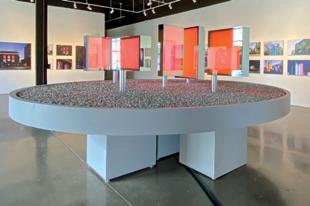
Phillip K. Smith III:
Three Parallels
Scottsdale, Arizona
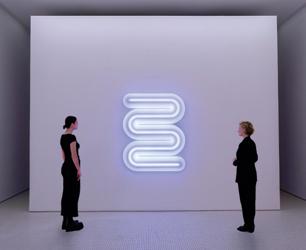
During a 10-month long solo exhibition, Smith will present a new large-scale site-specific work that defines an infinite space for color. The show will be the next installment of SMoCA’s Architecture + Art series, which presents groundbreaking projects by artists whose work explores and challenges the boundaries between architecture and art.
Palm Springs Art Museum
Peter Blake
Gallery
Laguna Beach, California
GESAMTKUNSTWERK is a curated exhibition that explores the intersection of art, design, and architecture. The result is a heightened living space enriched by a focused collection of modern and contemporary art and a world-class selection of historic modern design.
Great Park Gallery
Phillip K. Smith III: SHARED LIGHT Irvine, California
Library Street Collective Lightworks
Detroit, Michigan
Phillip
K. Smith III: Light + Change
Palm Springs, California
For this upcoming solo exhibition, Smith is composing individual immersive installations that create intimate experiences with his three ongoing series: Mirrorworks, Light + Shadow Works, and Lightworks.
Special Thanks to:
Karen Fox, Susan and Rod Lubeznik, Tamarisk Country Club, City of West Hollywood, Re becca Ehemann (WeHo Public Arts Manager), RIOS, Dapo Akinsiku, Colossal Steel, Magik Glass & Door, Environmental Lights, The Art Collective, CREO, Pulp Studio, Richard Fulk at Piedmont Plastics, Kevin Staniec & Adam Sabolick, City of Irvine, JJ & Anthony Curis and the entire Library Street Collective posse.
Credits: Photography: Lance Gerber Studio @lance.gerber
Graphic Design: FairyFierceFree.com
Cover image, and images on page 12 to 15: photo by PD Rearick. Courtesy of the artist and Library Street Collective.
Page 2: Great Park Gallery show image by Adam Sabolick
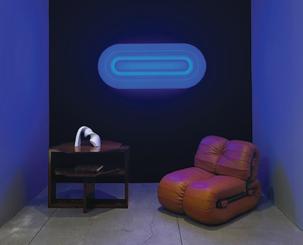
Solo exhibition of five of Smith’s public works defining the impact of large-scale public art in shared spaces and the power of light in the public realm through 3D model displays, photographic documentation, video, and narrative.
Solo exhibition of Smith’s newest forms in his ongoing Lightworks series that draw on ideas of space, form, color, light, shadow, and change.
Art at Tamarisk Rancho

Mirage, California
The newly established, annually rotating Art at Tamarisk program at the Tamarisk Country Club Clubhouse presents artworks selected by inaugural curator Brooke Hodge, which include highly regarded Southern California contemporary artists such as John Divola, Jim Isermann, Andrea Zittel, and Sara Genn. The initiative was conceived by collectors and Tamarisk members, Susan and Rod Lubeznik, to coincide with the recent significant renovation of the Clubhouse by architect Steven Harris and designer Lucien Rees Roberts.
Smith’s Faceted Disc – Variant 3, 2018, shown here in the inaugural exhibition, was purchased recently by Tamarisk for permanent display.
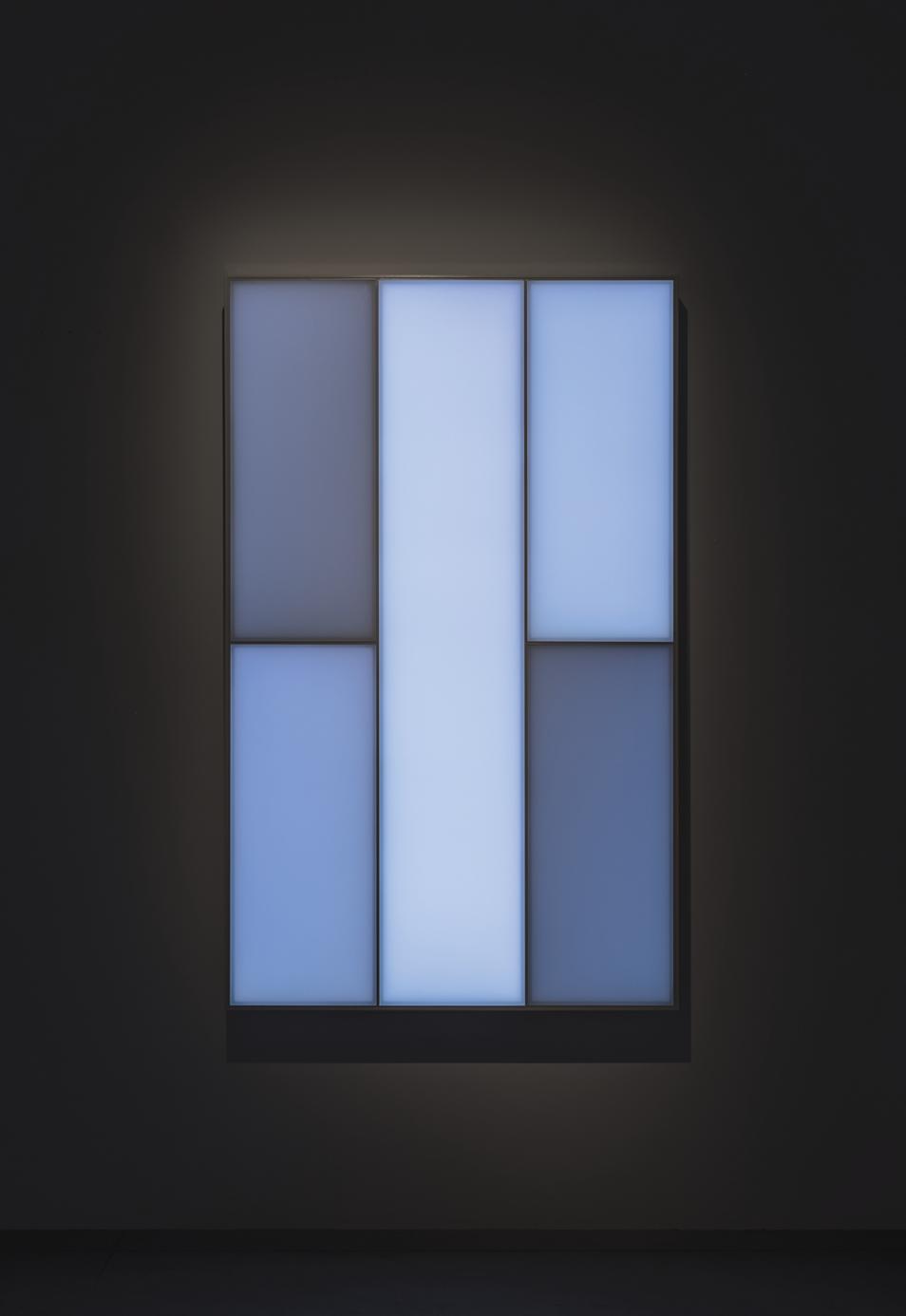
Parallel Perpendicular, 2022 West Hollywood, CA
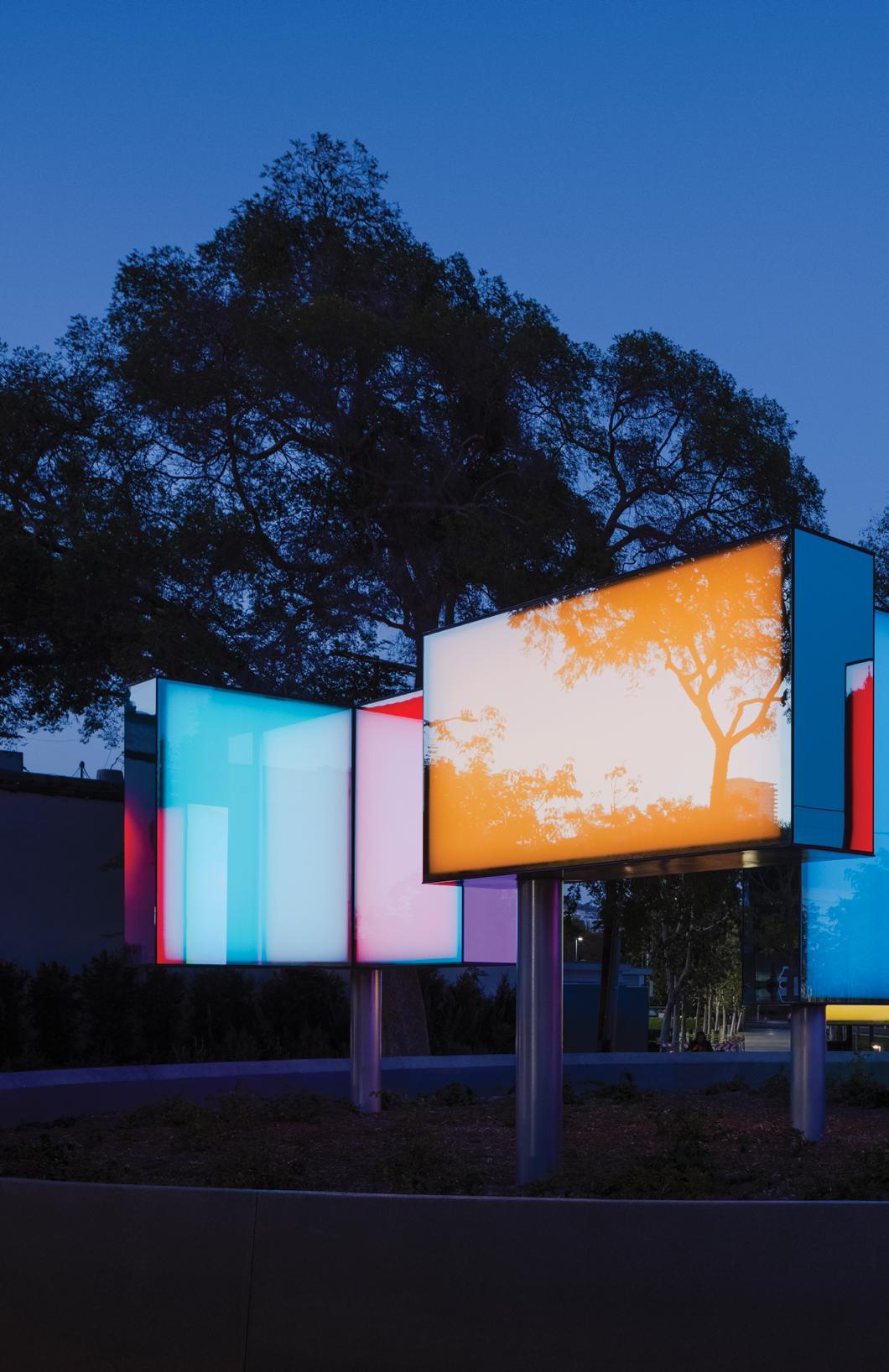
Earlier
After
this year, the City of West Hollywood announced a new permanent addition to the City’s public art program, Smith’s sculpture Parallel Perpendicular, sited in the freshly renovated Robertson Gardens area of West Hollywood Park, located adjacent to N. Robertson Boulevard between Santa Monica Boulevard and Melrose Avenue.Although Phillip K. Smith III has spent a large part of his life in the desert, he was born in Los Angeles, where his mother was a successful interior designer. He has fond memories of accompanying her on visits to the Pacific Design Center, “the big blue building,” where he would assist in returning fabric samples to various companies while his mom worked. The young boy would then rejoin her, his pockets lined with candy, and they would spend some time across the street playing in West Hollywood Park. Today, these memories remain embedded as initiatory moments when the future artist’s eyes were first trained around color, texture, material, and the multitudinous properties of each.
Now, over 40 years later, it’s only natural that Parallel Perpendicular, Smith’s first public art piece in Los Angeles, would be informed by a passion for color, interacting with an environment where his aesthetics were honed early on. The artwork comprises five free-
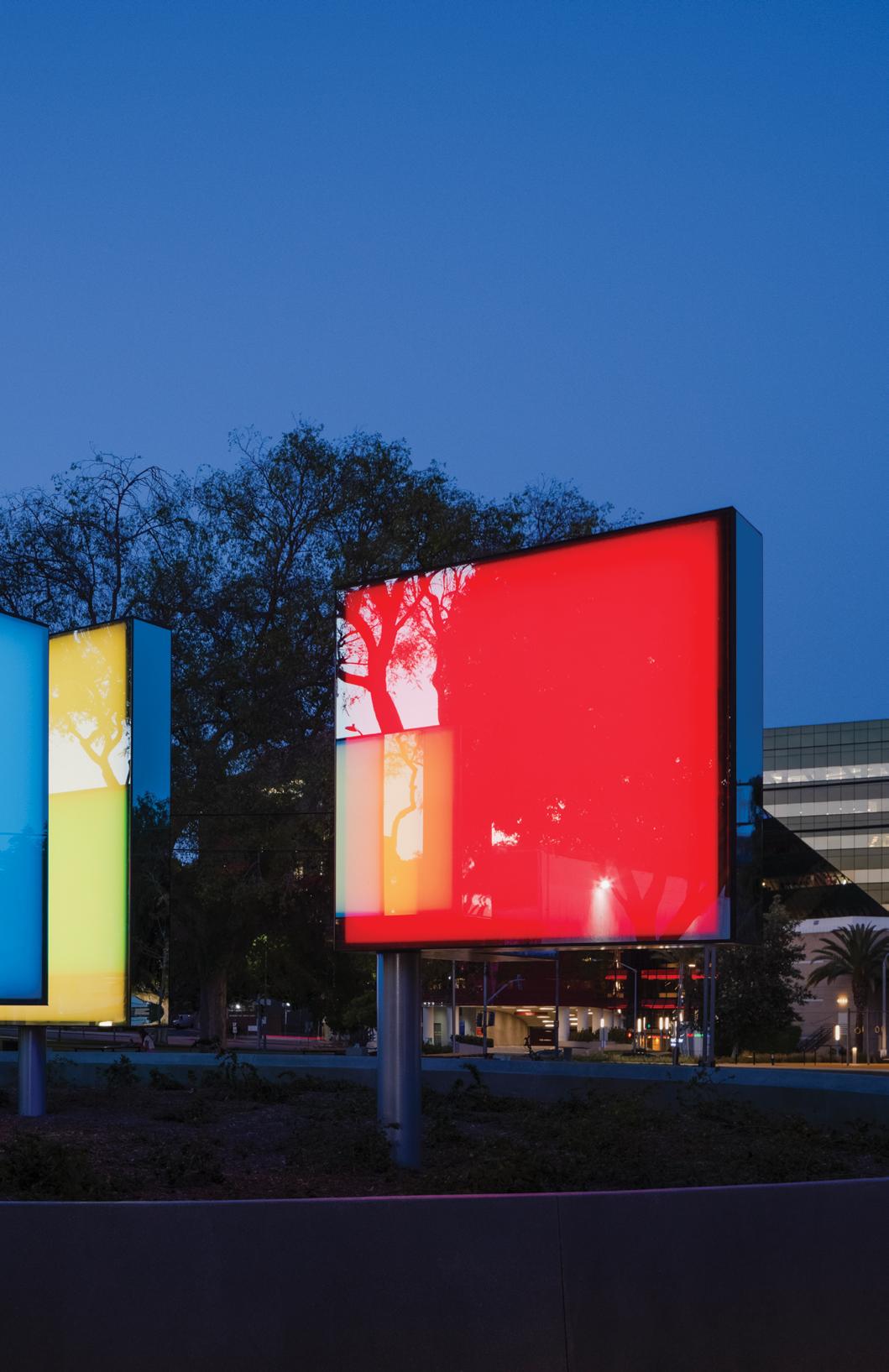
standing mirrored volumes defined by parallel and perpendicular planes, which hover above a 40-foot diameter circle of green landscaping. It is meant to be an entirely interactive piece. By day, these forms reflect the sky, old growth trees, and the surrounding West Hollywood views. By night, the mirrored surfaces become pure fields of color that slowly move through a precisely paced spectrum of hues. These colors reflect off each other, merging upon colors, creating new spaces of color, projection, and reflection.
The scale of the public work is in direct response to the more intimate atmosphere of the Robertson Gardens section of the park. This beautifully situated area serves as a park entry and connector to the Robertson and Santa Monica Boulevard retail and neighborhood zones, its respite from urbanity drawing people in both day and evening. For Smith, it’s a full circle homage to his roots and a powerful first public contribution to the fabric of the city.
Parallel Perpendicular is contained within a 40’ diameter concrete planter that defines a zone for movement around the artwork. This movement creates changing conditions in which colors layer on top of colors in a reflective space that expands beyond the artwork’s surface.
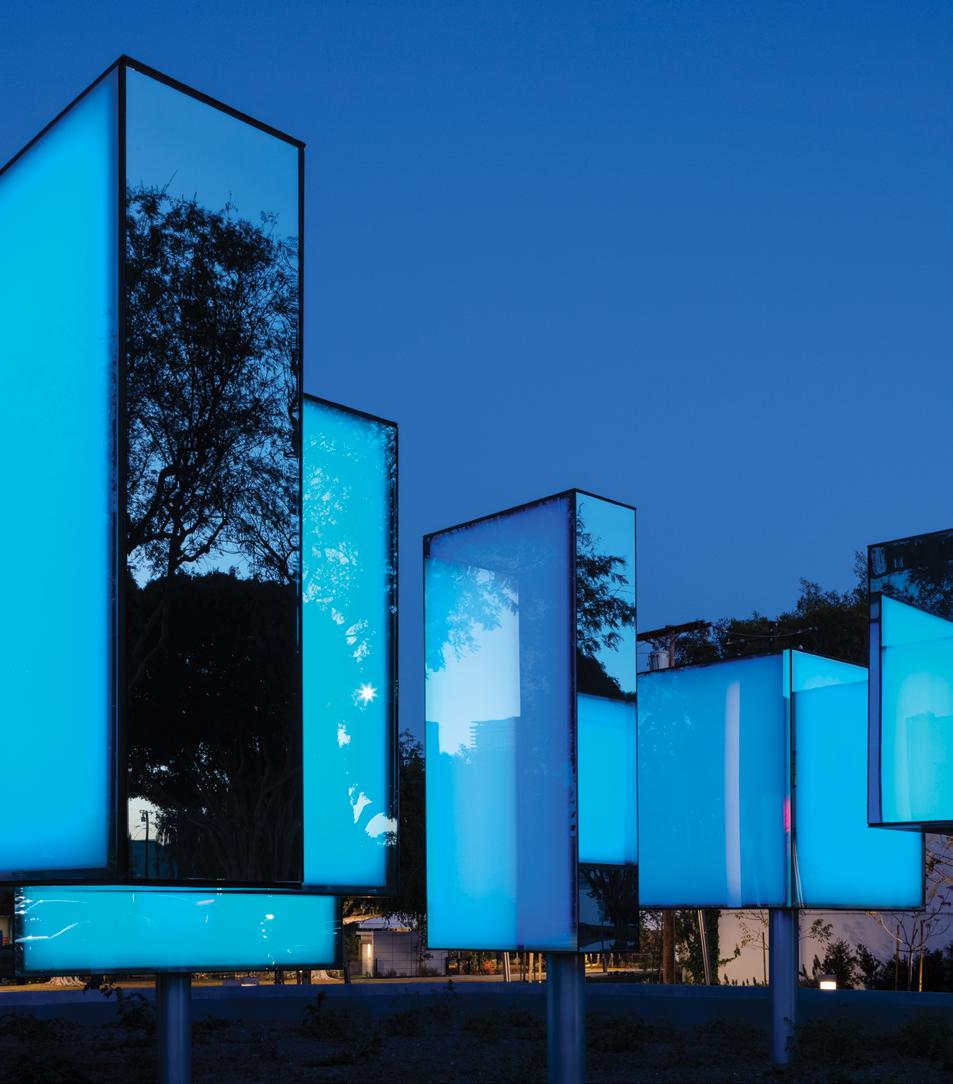
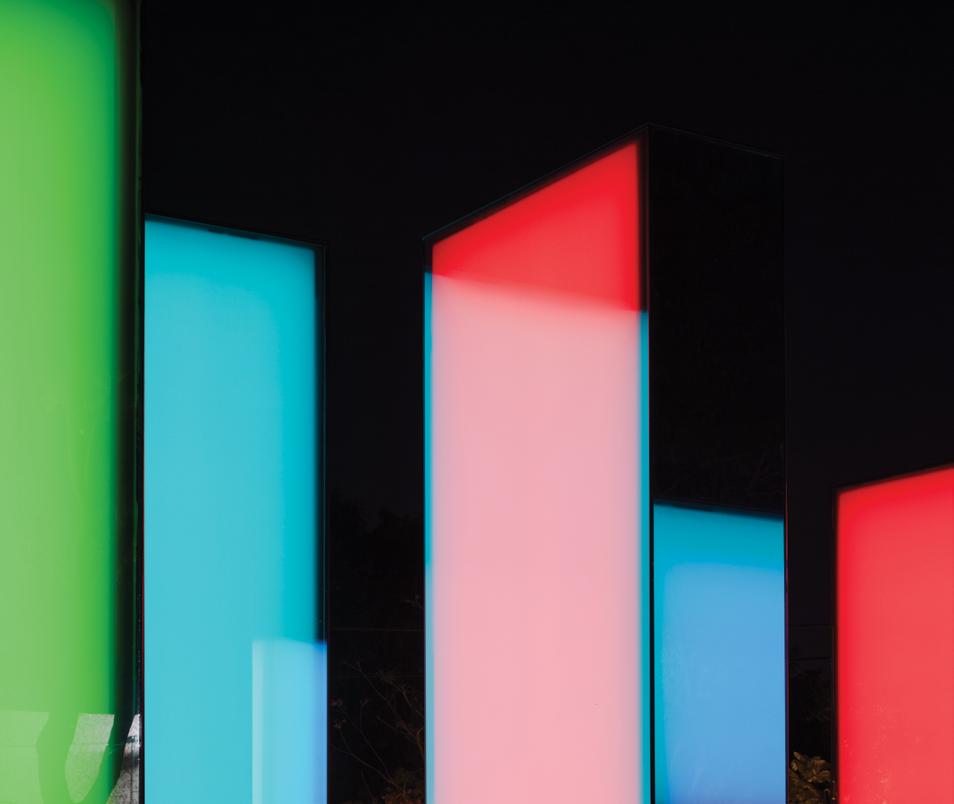

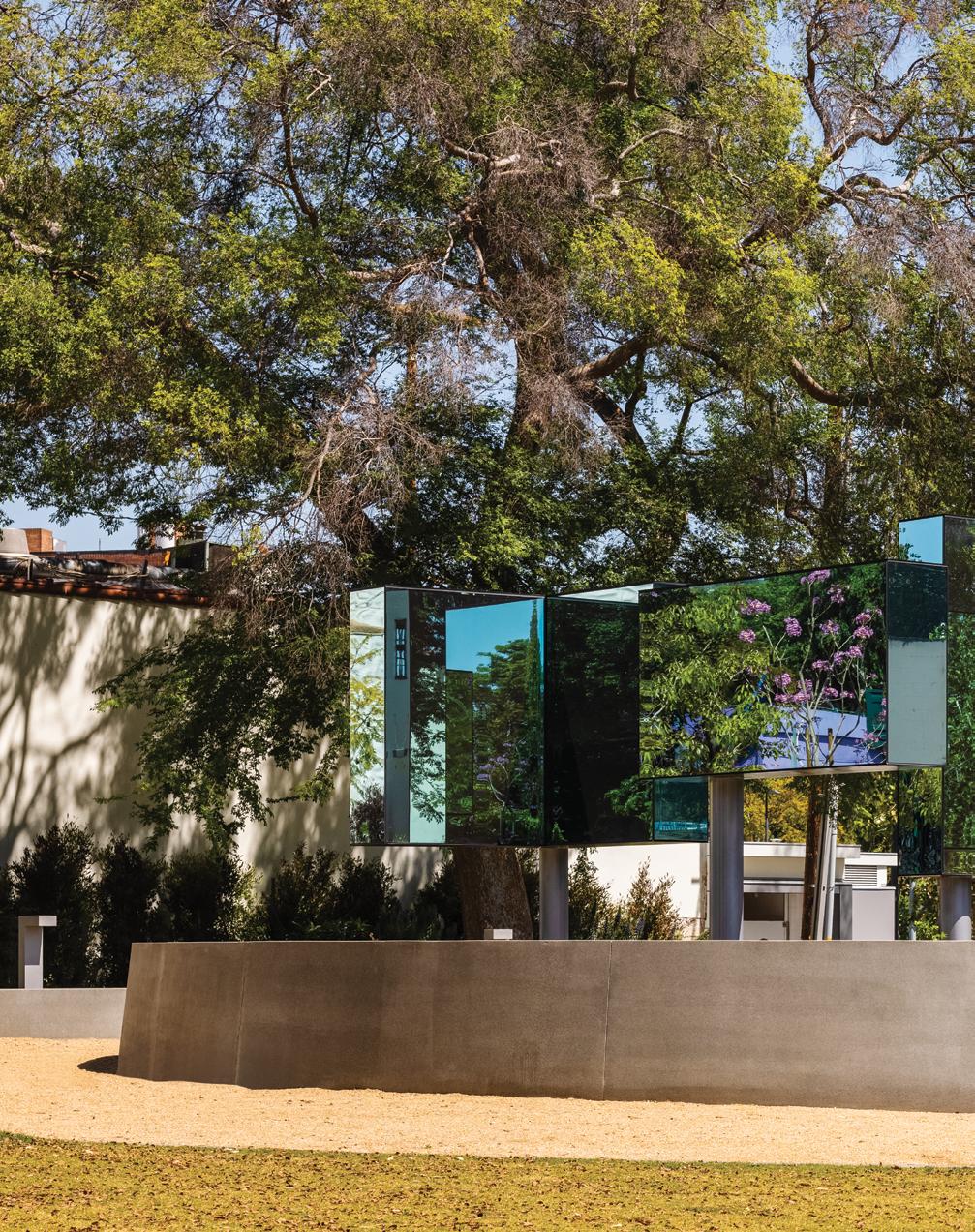
Parallel Perpendicular is a meditation on the changing city, sky, landscape, and energy of West Hollywood. As the sky changes, so the artwork changes. As the city changes, so the artwork changes. And like any city, the perceptual experience and definition of public space transforms as the sun sets and night falls. With this piece being my first permanent work in the public realm in the Los Angeles area, I wanted to honor the city that I was born in by carving out a space for light, change, and reflection in the center of an historic and re-imagined landscape.
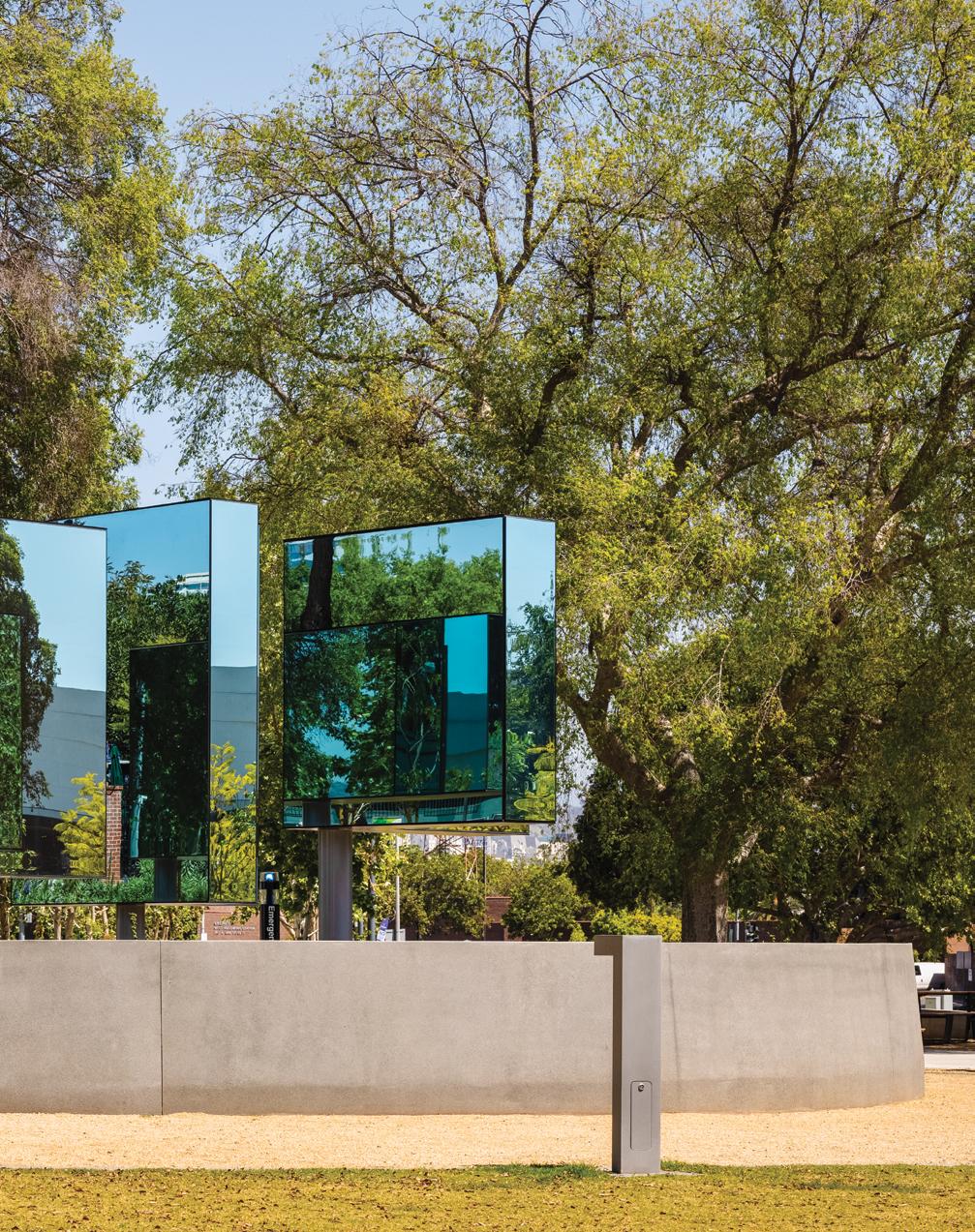
Sky Torus #1, 2022 Rancho Mirage, CA
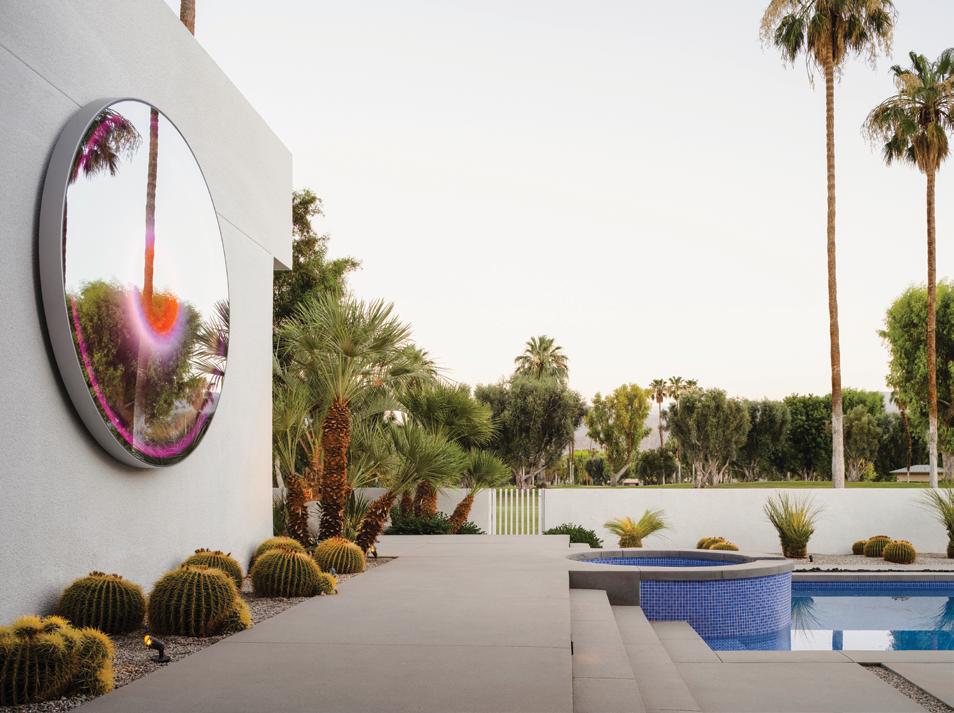
After a studio visit with friends from the Museum of Contemporary Art San Diego, collector Karen Fox commissioned Smith to create a work for an exterior location at her modern home in Rancho Mirage, California. The site, on the grounds of Fox’s home, opens up to the adjacent golf course, which affords wide open views of the San Jacinto mountain range to the south and west. Breaking the rectilinear composition of the home, Smith placed a pure, eight foot diameter reflective circle on the west facing wall at the end of the pool. The result is an abstraction of directionality where one sees the west against the backdrop of the east. This compression of ever-shifting directionality and space into a singular view transforms into an organic metamorphosis of nature denoting the change of atmosphere over the individual hours of the day.
By day, the crisp, cropped, seemingly abstract portal to the real world reflects the shifting sky, the palm tree tips, and the San Jacinto range. At dusk, Smith’s choreographed internal light emerges from within Sky Torus, seemingly floating within reflections of the surrounding landscape’s deep purple, rich salmon, and fuchsia. After sunset dims, the disc glows, enlivened by its strategic queue of lit concentric circles blooming from within an aluminum frame, extending the magical “golden hour” that valley denizens famously know and love. Illuminated color within a night sky, unhinged from the physics of reality, where mystery and beauty wash away the concrete nature of time, marks the core of this commission. Through a precisely placed reflected surface, Smith uses the daily phenomenon of the changing sky as the canvas on which he works.
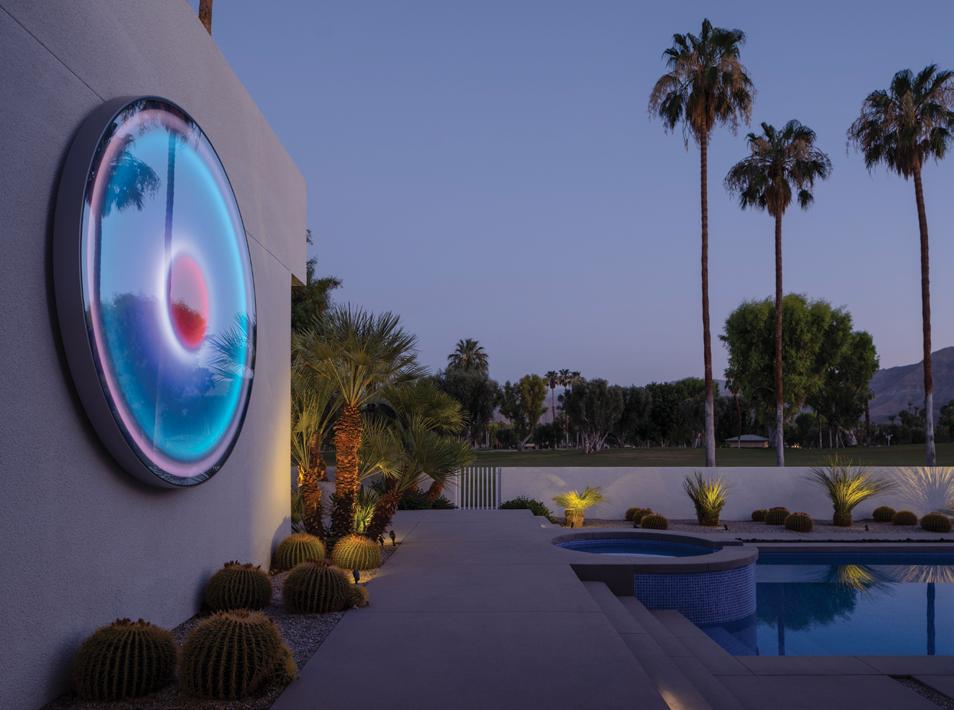
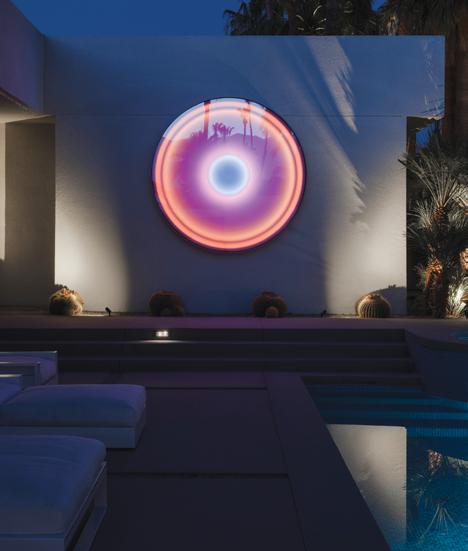
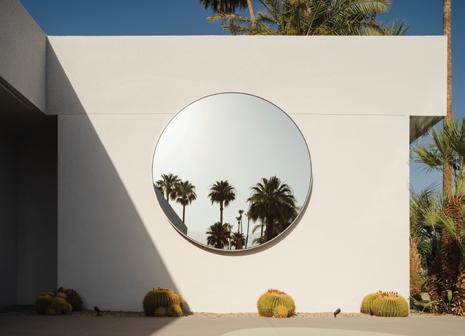
Lightworks Library Street Collective
Detroit, MI
Through June 25, Library Street Collective presents a solo exhibition of light-based works by Smith, featuring new works from his on-going Lightworks series that draws on ideas of space, form, color, light, shadow, and change.
The Lightworks series originated when Smith created Aperture during his artist residency in 2010 at the Palm Springs Art Museum. Organized around nine pure geometric forms across a 24’ long x 7’ high x 2’ deep internally lit topography of translucent white acrylic, Aperture created an all-encompassing experience in shifting light, bathing viewers in color. From this generative work, Smith developed his more intimate, compressed lit works focusing on two singular forms, the torus and the lozenge. These core forms of the Lightworks series were selected for their lack of corners or intersections, allowing the eye to move freely and fluidly across their surface. Additionally, the concentric reality of the Torus provided a natural focus, while the Lozenges created more linear compositions, as stretched spherical forms.
These new pieces, presented for the first time at Library Street Collective, re-engage Smith’s earlier Lozenge forms, progressing them through formal manipulations that bend light and space or that combine multiple singular forms into layered compositions of color.
Smith views the Lightworks as highly specific three-dimensional canvases that he “paints” over time. Like animated paintings experienced durationally, each work is uniquely color choreographed by the artist. As he selects the precise color, brightness, and pace of change, he is constantly shifting forwards and backwards in time experiencing and reacting to his creative choices as the choreography develops.
Meditatively paced, this choreography is the heartbeat of the Lightworks, allowing them to breathe color and inviting viewers to slow
down and focus their perception. As colors shift, the forms themselves appear to expand and contract – at times, seemingly pulling away from or pushing towards the wall – creating dynamic spatial conditions within the work as well as the space in which they are sited.
Living and working in the Southern California desert, Smith is confronted daily with the sublime color of the sky, which he states is our best example of the full spectrum of lit color. While his selected hues recall the electric combinations of the sunset or the hazy monochromatic days of a dusty desert, our own perceptions vary for each of us. Color itself is a mnemonic device, recalling our own emotions, experiences, objects, and places. While these uniquely personal perceptions inevitably arise, Smith seeks to use color as a way of engaging directly with “universal beauty” – his belief that there is a common language across all of humanity that unites us, most often through color, nature, and pure form.
Like all of Smith’s work, the Lightworks engage with changing ambient light. With lights off, they are quiet, minimal, all white forms presenting a surface composed entirely of light and shadow. During the day, the color choreography skews towards pastels as the lit color mixes with the ambient light of the day. Into the evening, the Lightworks transform, dematerializing into stacked layers of shifting color. Ultimately, these are works that engage with the space in which they are sited – where one finds their own way of living with and experiencing them.
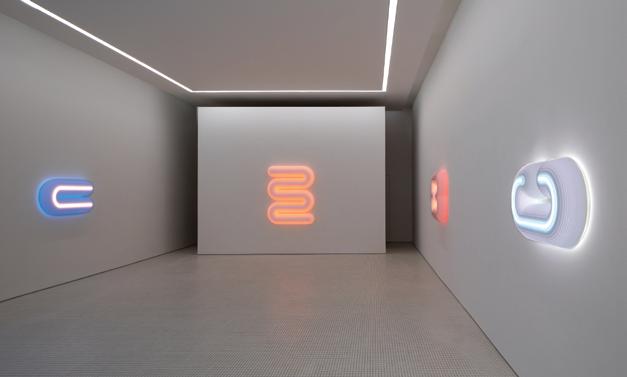
This page: Lightworks installation at Library Street Collective.
Clockwise from left:
Bent Lozenge 1:1, Bent Lozenge 2:1, Lozenge
Combine 1:1, Bent Lozenge 3:1, Bent Lozenge 4:1


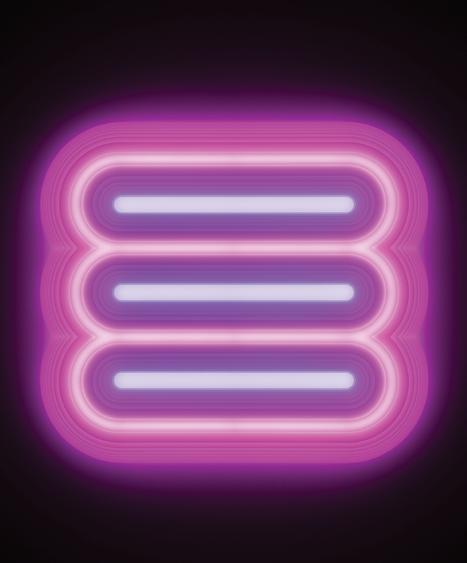
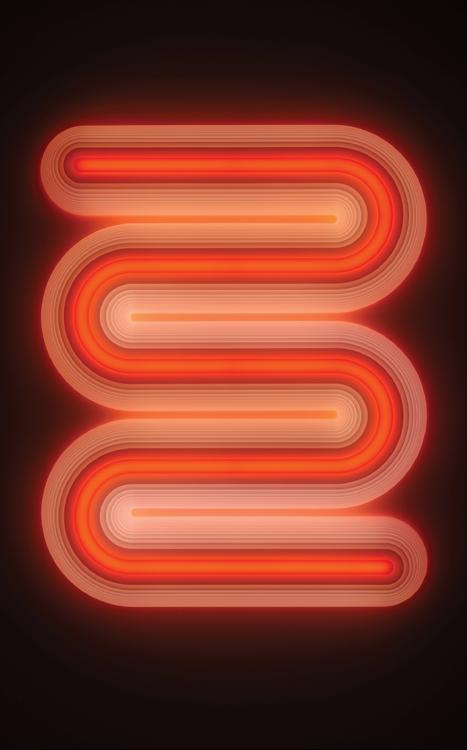
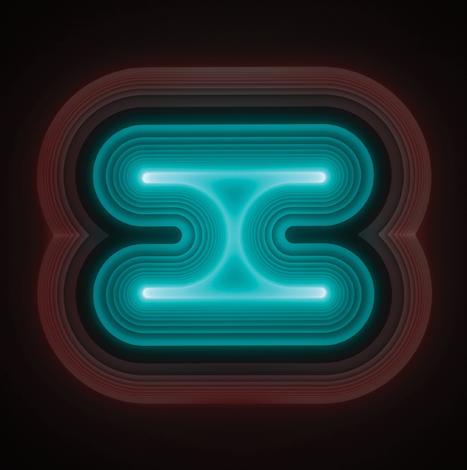

Over the last year, I’ve been looking back at the language of the original torus and lozenge-shaped Lightworks and have pushed, bent, and combined them in order to define new ways in which light merges, wraps, and moves across their surfaces.
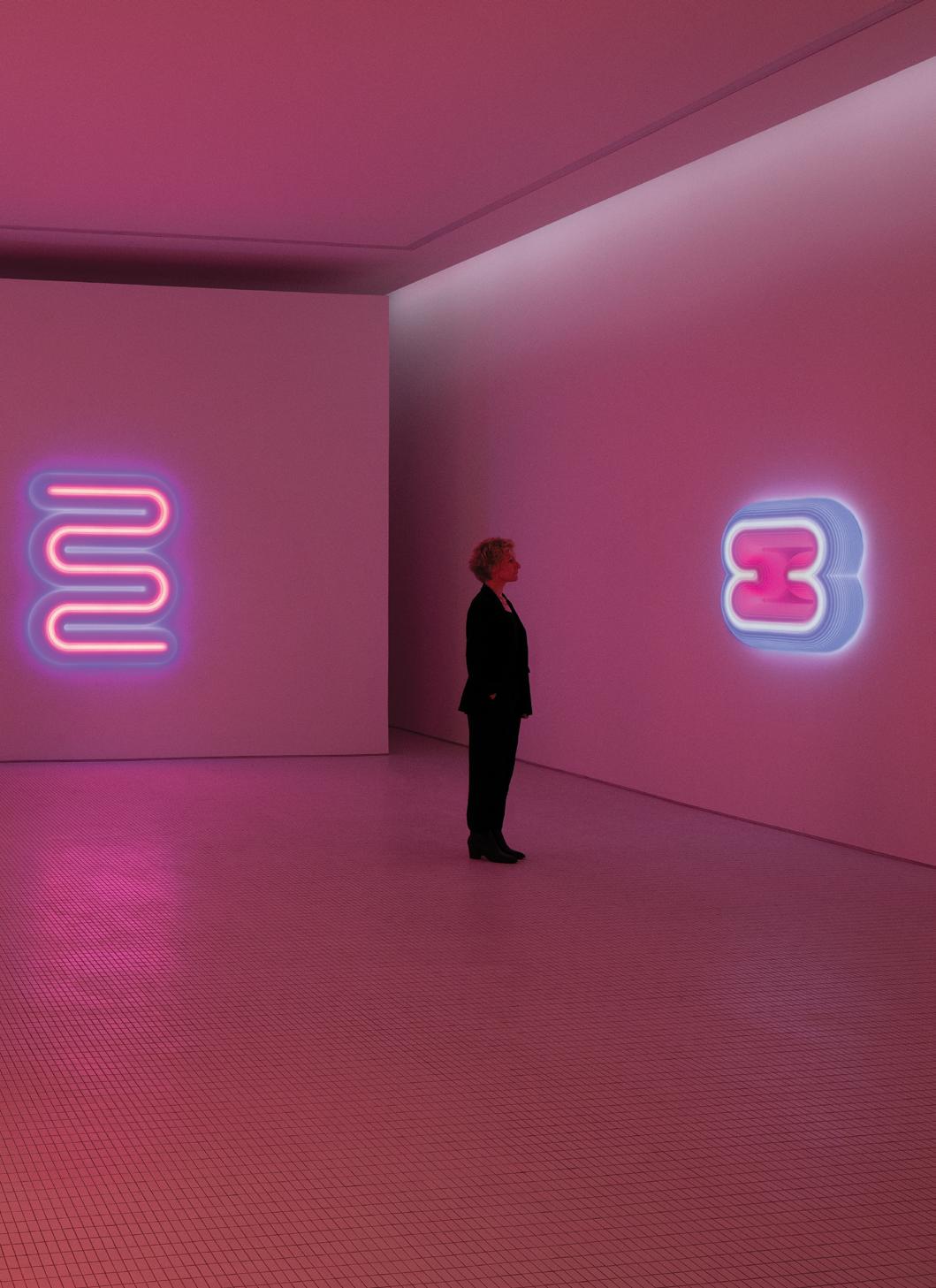
“ ”
—Phillip K. Smith III
 The curvy bends of Bent Lozenge 2:1 glow and snake across the wall inviting a meditative, focused experience of light, color and change.
The curvy bends of Bent Lozenge 2:1 glow and snake across the wall inviting a meditative, focused experience of light, color and change.
